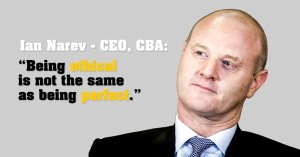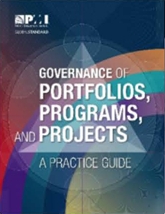
Note: This post has been updated and augmented, for the latest version see: Do 80% of organizations average a project failure rate of 80%?
This post is not intended to provide precise numbers, rather to highlight an intriguing anomaly that could benefit from some structured research. Over many years, and many different reports, based on different survey methods, we regularly see the following data presented:
- Far more projects fail than succeed, the ratio is typically around 30% success 70% fail.
- There are some organizations that routinely achieve project success, these are slowly increasing as an overall percentage and currently sit at around 20% of the organizations that ‘do projects’.
- The vast majority of executives surveyed think their organization manages its projects successfully. The percentage of executive with this view seems to sit comfortably above 80%.
But, unless there is a major distortion in one or more of the data sets, these data are mutually incompatible!
If 20% of organizations that ‘do projects’ get most of their projects delivered successfully, it means this group have to account for at least half of the 30% of successes, which pushes the ratio of fails for the rest of the organizations to 15:65 = 19% success vs 81% fails.
In round numbers 80% of the organizations doing projects, have a failure rate of around 80%.
But if more than 80% of executives feel their organizations deliver projects successfully this data suggests that some 60% of these executives are seriously misinformed. So, my question is why do some 75% of executives in the 80% of organizations that routinely fail to deliver projects successfully appear to believe the opposite? The answer to this question probably sits in the complex area of communication failures caused by organizational culture and governance issues, for more on this see: https://mosaicprojects.com.au/PMKI-ORG.php
This assessment also helps explain why so many organizations simply do not invest in systems to improve project delivery. There is no point in spending money to fix a problem the executives cannot acknowledge. So whereto from here??
The answer will not be easy. To quote from the 2018 PMI Pulse of the profession survey: “There is a powerful connection between effective project management and financial performance. Organizations that are ineffective with project management waste 21 times more money than those with the highest performing project management capabilities. But the good news is that by leveraging some proven practices, there is huge potential for organizations to course correct and enhance financial performance.” But it appears that while the people setting their organizations strategy, culture and governance systems may be aware of this, a large percentage do not believe it applies to them – their projects are managed appropriately, even if 80% of them fail.
Changing the culture to implement effective project governance and controls needs executive support! For more on the strategic management of projects and programs see: https://mosaicprojects.com.au/PMKI-ORG-015.php#Process1
Notes:
- First, I am fully aware of the ‘Flaw of Averages’, and the resulting problems in the way the calculations in this post have been made. But in the absence of an integrated data set for proper statistical analysis, I believe the trends highlighted above are valid indicators of a problem. What is needed to test these indicators is a proper survey that contrasts executive opinions against project success rates across a large sample of organizations.
- The second issue is the sample of executives surveyed. Most of the data I have seen comes from ‘opt-in’ surveys which is likely to bias the sample towards executives that consider projects important.
















